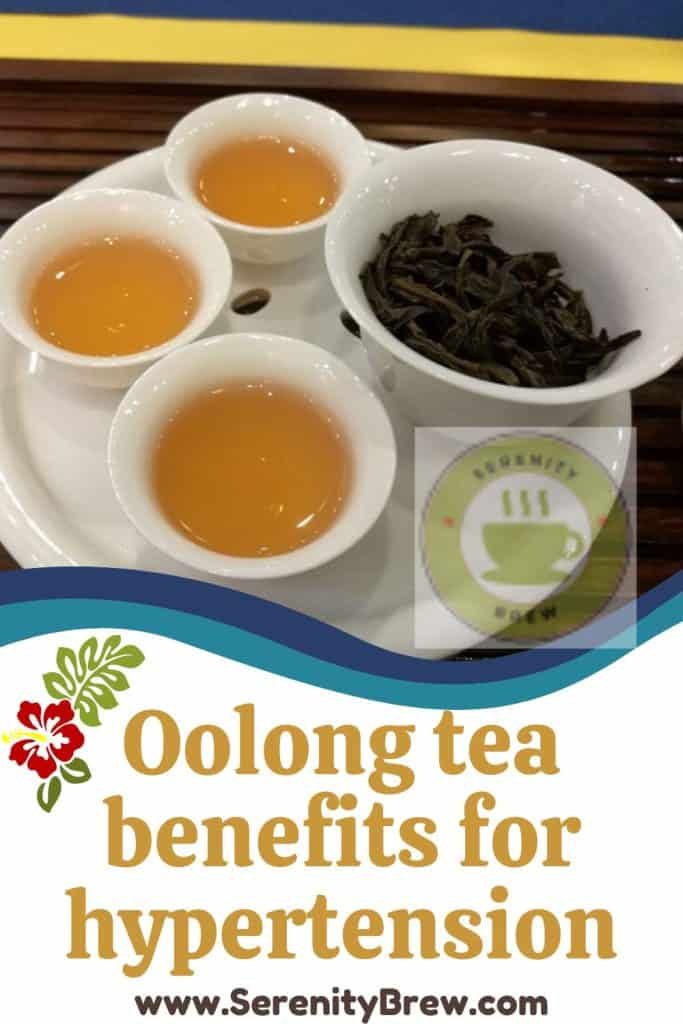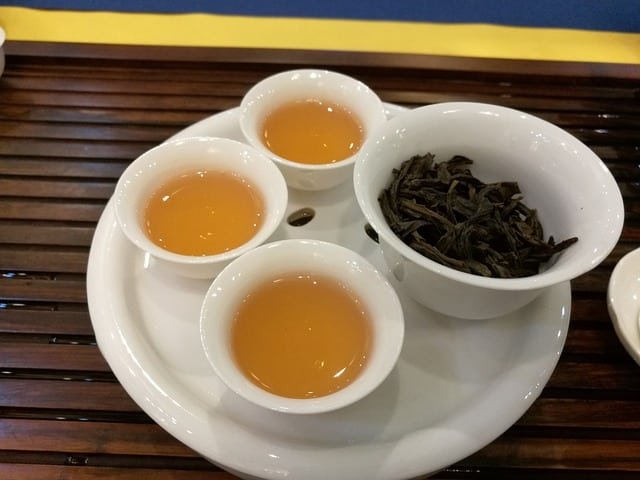
Oolong tea is a natural, low-caffeine beverage with health benefits quite similar to green tea .
In China, it is preferred over green tea because of its mild and pleasant taste. It’s a perfect alternative for those regular coffee (or black tea ) drinkers who want to switch to healthier options, but simply can’t handle the bitter, herbaceous taste of green tea. Regular consumption of oolong tea can help lower blood pressure and cholesterol levels to improve cardiovascular health. A study involving more than 76,000 Japanese adults in the age group 40-79 found that drinking one or more cups of oolong tea every day can eventually reduce the risk of mortality from cardiovascular disease by nearly 61%.
What is Oolong? Oolong is a traditional tea, which has been widely consumed in China and Taiwan for the past 400 years. The same raw material ( Camellia sinensis ) is used to make oolong tea, green tea, and black tea. So how do they differ? The degree of fermentation (oxidation) varies during tea making. For black tea, the tea leaves are heavily oxidized until they turn black, while for green tea, the leaves are used almost unoxidized. Oolong tea is semi (partly) oxidized. That is why it falls between green tea and black tea in terms of taste and health benefits. The local Chinese name for oolong tea is Wu long tea.
How caffeine can make hypertension worse? There may be a temporary increase in blood pressure for people who consume caffeine occasionally. However, no such phenomenon is observed in habitual caffeine drinkers. According to a review published in the Archives of Internal Medicine , in May 1988, people who do not drink caffeinated beverages regularly may experience an increase in their blood pressure levels during the first few days of consumption. But this effect would fade with regular consumption and the blood pressure level would return to normal.
In general, people with high blood pressure are advised to reduce their daily caffeine intake to control symptoms. A cup of coffee (brewed) contains around 100mg of caffeine. Therefore, limit your daily coffee intake to 2 cups.
How Much Caffeine Does Oolong Have? Numerous factors can affect the caffeine content in any tea:
- Tea Plant Growing Conditions
- tea making procedure
- Tea brewing variables such as steeping time, water temperature, and tea bag or loose tea leaves.
Various attempts have been made to measure the caffeine content of commercially available tea varieties and general ranges are suggested as follows:
- Oolong tea is low in caffeine, nearly a quarter of brewed coffee when consumed in the same amount.
- The caffeine content in Oolong is quite comparable to that of green tea.
Oolong benefits for hypertension
Stress and obesity are among the most important causes of high blood pressure. In addition, diabetic people have a high risk of developing this pathology. According to the UK Blood Pressure Association, around 25% of people with type 1 diabetes and 80% of people with type 2 diabetes have high blood pressure. In short, most people with diabetes develop high blood pressure during their lives. Let’s discuss how Oolong helps address these issues:
- Oolong slimming effect: Thanks to catechins (polyphenolic antioxidants) and caffeine, oolong tea increases the body’s metabolism to accelerate the rate of calorie burning. It would facilitate the optimal breakdown of accumulated body fat to reduce obesity. A study, observed that drinking Oolong can increase body metabolism by 10% compared to drinking plain water. This effect lasted for 2 hours after drinking the tea.
- Helps prevent and control diabetes: In general, all teas, black, green, and oolong, are helpful in reducing the risk of developing type 2 diabetes. The polyphenol antioxidants in oolong help lower blood sugar levels and improve insulin sensitivity to reduce the risk of developing type 2 diabetes. A regular consumption of oolong tea, half a cup or more over a 1-year period, reduces the risk of diabetes by 46% in the Chinese population.
How much Oolong should you take?

The recommended dose is 3 cups of Oolong every day, preferably one hour after meals. Do not take it with food; as the antioxidants in tea and caffeine can interfere with the absorption of nutrients from food. Avoid drinking it before breakfast (or on an empty stomach) as it can cause stomach problems.
